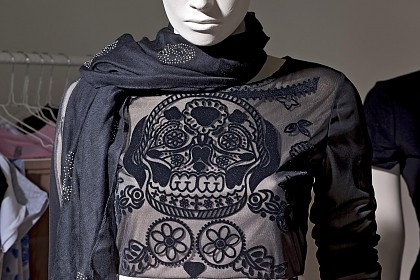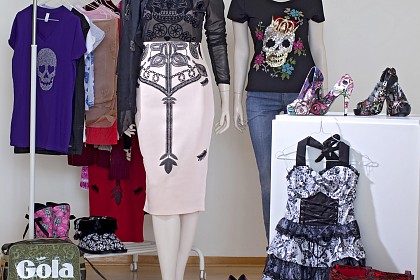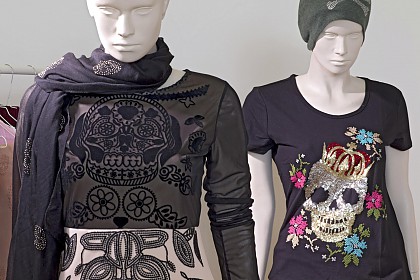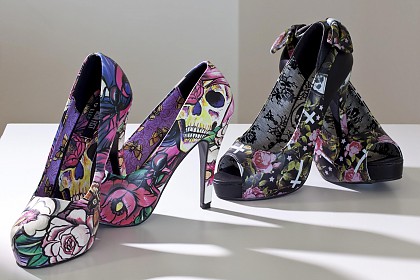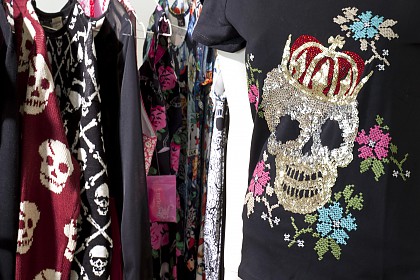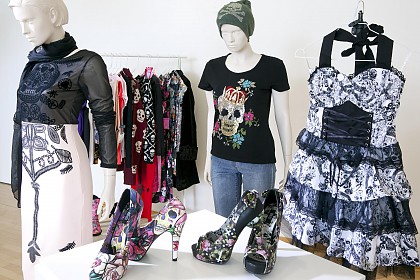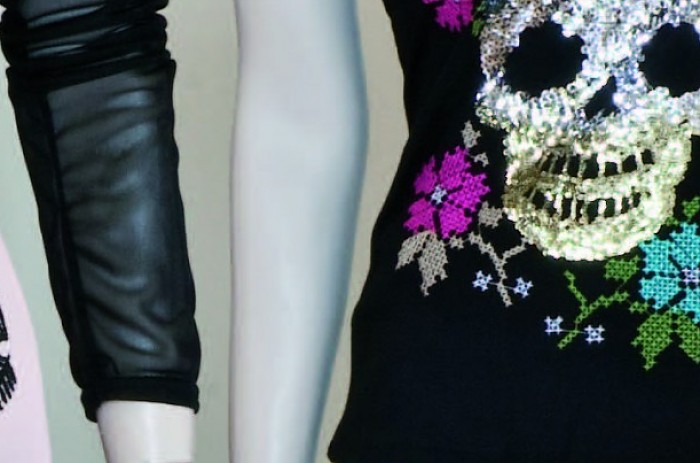

25. July 2015 – 3. January 2016
Buy now, die later!
On one hand, we don't want to have anything to do with death. It makes us sad, sometimes very frightening. On the other hand, we like to adorn ourselves with it – on sweaters, T-shirts, dresses, belts, even on swimsuits, briefs and bras. But such a look doesn't make us sad at all, on the contrary: we find it original, chic or just cool.
In the world of fashion, death is on the rise. Hardly any designer and clothing manufacturer can do without it. And an end doesn't seem to be in sight for a long time yet, because a large number of garments with skulls, skeletons or other attributes of transience still fill the shelves of countless fashion shops, decorate shop windows, advertise their "makers" and the labels or brands representing them in large format – and sell like hot cakes.
With the exhibition "The Sepulchral Store – Buy now, die later!", the Museum for Sepulchral Culture wants to trace the fashion with death more closely. For this purpose, a store has been staged that not only offers a wide range of 'clothing', but also clearly shows the cultural significance of the topic that has been achieved in the meantime. Fashion and Death is no longer just something that is primarily aimed – as one might think at first – at trend-conscious teenagers, but one that has meanwhile taken in almost all age groups.
The Sepulchral store focuses on all those goods that a person wears on their skin, which is why it includes accessories (e.g. jewellery) as well as tattoos, which are presented in an integrated tattoo studio and are actually carried out on certain dates.
The Museum for Sepulchral Culture is not content, however, to transfer contemporary fashion with death into a fictitious commercial commodity business and to condense it within it; with its department store of the same name it also wants to provide answers to the questions that arise in the context of this trend about its origin and reasons. These are based on views and everyday objects representing these views, including a number of textiles and accessories that were committed to the so-called vanitas and combined various symbols of transience – above all the skull. The skull in particular was once regarded as a reminder of earthly finiteness, combined with the intention of reflecting on a God-fearing christian way of life. In addition, however, it has always been a symbol of physical danger to life and the threat of death. Socio-economic upheavals, such as those that took place especially since the European Enlightenment at the end of the 18th century, finally led to an increasing popularization of this motif, which finally resulted in its trivialization at the beginning of the 21st century. This change is shown in more detail within the Sepulchral store.
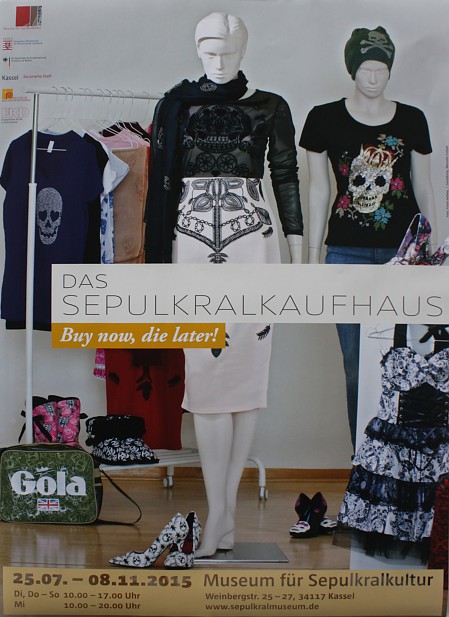
Arbeitsgemeinschaft Friedhof und Denkmal e.V.
Zentralinstitut für Sepulkralkultur
Museum für Sepulkralkultur
Weinbergstraße 25–27
D-34117 Kassel | Germany
Tel. +49 (0)561 918 93-0
info@sepulkralmuseum.de



